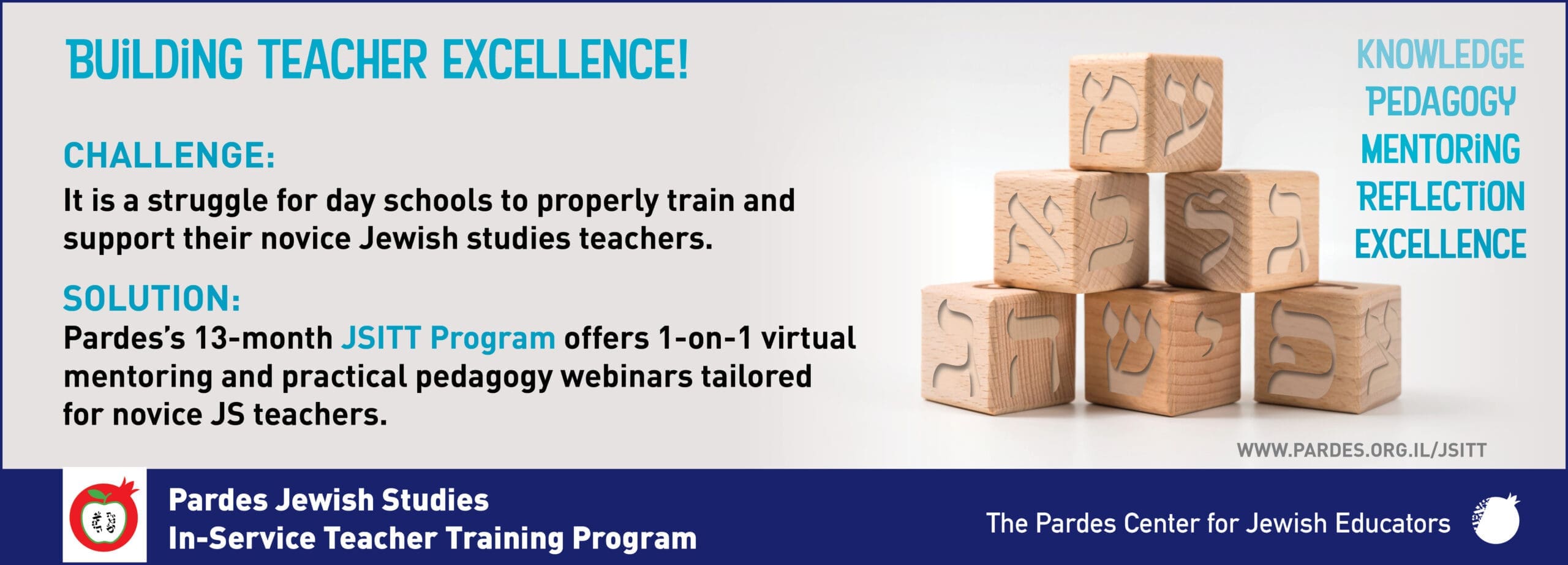Anatomy of a Gemara Lesson

Avi Wasser is the Director of Learning and Academic Support at Katz Yeshiva High School (Boca Raton, FL) where he specializes in the education of Middle and High School students with disabilities. Rabbi Wasser is passionate about facilitating meaningful, relevant, and appropriate opportunities that ensure successful learning, including for Gemara, for all students.
You have been there, too, right? You thoroughly prepared a Gemara lesson by formalizing how you will explain the shakla vetarya, you concocted attention-grabbing examples and cases, charts to organize the conflicting opinions, and provided a translation and question practice worksheet. You slowly read the Gemara aloud while students annotated the text or completed linear translation sheets. You patiently and clearly explained the concepts and reasoning on a first, second, and even third pass of the reading. At the end of the sugya, you wrote a test that required students to detail the meaning of each step of the sugya. You assume that students will organically pick up on the reasoning patterns and build a knowledge base as they gain experience learning.
However, challenges abound. Dovi is overwhelmed by the attempt to punctuate, translate, and explain the text simultaneously, leading to fragmented comprehension. Chaim can repeat the question after I explain it but can’t identify who the Gemara is challenging by that a question or why. Zev confuses the way the Gemara originally understands the case of the mishnah versus the understanding based on the first and second answers of the Gemara. Dovid’s responses to oral and written prompts lack depth and fail to capture the intricacies of the Gemara. He uses 80% of the words that I did, but I can tell from the 20% he left out that he is parroting phrases without really understanding them. Even though our class has encountered half a dozen ureminhu questions so far in this perek, Hillel still doesn’t recognize what it means or the kind of question it represents. Instead of progressing, numerous students continue to grapple with the foundational concepts of how the Gemara’s discussion flows, retaining vocabulary, and interpreting the text. Rather than honed critical thinking, successful learning is often defined by accurate memorization and recitation.
The Unique Challenges in Teaching Gemara
Teaching Gemara presents us with a unique set of challenges:
- While the primary focus of many subjects is content mastery, the focus of Gemara is cultivating textual and reasoning skills. In fact, I fully anticipate that my students will return to the masekhet at some point and learn it repeatedly because it is an important part of their religious life. Since the acquisition of specific content knowledge is not my ultimate goal, how do I define what my goal really is?
- General studies teachers are usually provided with specific age-appropriate curricular standards and goals and professionally crafted curricula designed for the developmental skills and knowledge level of their students. By contrast, Gemara presents a text that is deliberately terse, obscure in nature, and lacking punctuation. It is studied by young beginners and advanced scholars at innumerable levels of analysis and interpretation. The very definitions of “understanding” and “mastery” are elusive, and if I cannot define them then how can I teach toward or determine when my students have achieved them?
- For the Rebbe of the inexperienced learner, deciphering the text adds layers of complexity that, in and of themselves, are daunting. And while reading is a prerequisite skill for accessing the depths of the subject at hand, it is not where the satisfaction and growth in studying the Torah SheBe’al Peh Reading and translation practice is necessary but tedious. How do we avoid having the tedium overshadow the experience of our students? How do we balance skill acquisition with “real” learning?
- While teaching other subjects usually means the delivery of content, Gemara is a dynamic dialogue, the development of which can be lengthy and complex. The comprehension of each new step is dependent on and relates to the previous ones. Understandings shift from line to line; facts are disputed and reinterpreted in a variety of conflicting ways. How do we present this in an organized, comprehensible, and memorable form?
- The Gemara’s content covers a very extensive range of topics and styles of discussions demanding significant frontloading of background information and concepts. All this makes it challenging to use a structured and consistent approach to building skills.
- Eitan shone in our lively class discussions but is unable to show that on a test; Shimmy never demonstrated a clear grasp in class, but his responses include the correct phrases; Binyamin’s test, which is almost entirely blank, gives no clue as to where things went wrong for him. With so much complexity and so many kinds of knowledge to learn and skills to develop, how can we properly assess our students’ development and progress?
Compounding these challenges are the high stakes involved. Given the communal expectations that students will be lifelong learners of Gemara, deficiency in the essential skills that need to be acquired at this stage can hinder a student’s ability to engage in future learning endeavors that are at the fabric of their Orthodox cultural milieu. Their confidence in themselves, and even in their very identities as Benei Torah, may suffer.
This reality demands a careful and intentional approach to our goals and lessons.
Backwards Design
Backwards design, championed by Grant Wiggins and Jay McTighe in their book Understanding by Design (UbD), flips the traditional planning approach on its head. In UbD, we start with the end in mind and work our way back to the beginning. A unit is planned by first pinpointing exactly what we want our students to achieve—these are the learning outcomes. Then, we determine what data would serve as evidence that they have reached those goals and create the appropriate assessments. Finally, we build the actual lessons and activities that guide them toward those outcomes. This approach ensures that teaching is laser-focused on specific objectives, resulting in more visible and measurable learning.
As we’ve detailed, the content and skill demands of Gemara are complex, so identifying the learning outcomes involves a close task analysis. When examining the process of reading and comprehending a text of Gemara, I have identified six distinct skills or knowledge types:
- Background knowledge: What terms, concepts, or background information do the students need before beginning this sugya?
- Structure and organization: What are the steps the Gemara will take in its dialogue? What is the logical flow of the sugya?
- Textual decoding: What are the new words they will learn to read and pronounce? Where do questions, answers, challenges, supports, and proof texts begin and end? With which unfamiliar acronyms or abbreviations will they need to contend?
- Textual comprehension: What are the new words that students will learn to translate and need to retain?
- Comprehension: Typically, there are layers and nuances to the explanations and interpretations in the Gemara. How will students understand the Gemara’s intention and how it is accomplished with each step?
- Big Ideas: What are the fundamental and overarching concepts, principles, or themes within Gemara in general that will be touched upon in this sugya? For example, while the halakhot in the first mishnah of Bava Kama address the parameters of restitution for damage caused by one’s property, they are also applications of what Wiggins and McTighe call Big Ideas, in this case, responsibility and accountability—ideas which emerge when studying about shomrim (responsibility for objects being watched), hezek re’iyah (privacy), shutfut (partnership), and numerous other places. When understood in that context, students can be encouraged to compare and contrast these laws to their previous learning in a way that creates an enduring knowledge base and enriches their understanding of the Big Idea. Another example of Big Ideas is connected to the realm of skills. The Gemara’s limitation of a mishnah to a specific case (hakha bemai askinan) to resolve a contradiction between Rava’s statement and the mishnah is a repeating tool—one of four—that the Gemara uses to resolve clashes between the position of an Amora and a tannaitic source. Recognizing this and the other tools, including how the tools are used differently, builds a student’s understanding of the way Gemara works. Even the need to resolve the inconsistency is a Big Idea as the hierarchy of halakhic authority is fundamental to understanding Gemara and the multiple layers of interpretation built upon it. Explicitly naming, discussing, and assessing the Big Ideas in our lessons build a rich knowledge base.
Preparing to teach
Given that there are six distinct learning areas, each needs its own definition of goals and its own preparation, so I essentially prepare a sugya six times, identifying learning outcomes for each learning goal. This does not necessarily mean six different lessons, as sometimes these outcomes merely inform the language that I use during instruction or influence how much time I spend on one aspect of the topic over another or prompt me to remind students of a Big Idea before we begin or to pose an Essential Question that triggers their own associations with it. At the same time, sometimes the different areas of preparation do require building mini-lessons to introduce select words, common dialogue structures, or background concepts before diving into the text.
The process of identifying such detailed learning outcomes hones my focus and therefore my assessment and instruction. Those outcomes vary with the nature of the Gemara from one sugya to another, demanding that I prioritize what is best brought out from each. A variety of assessment activities, designed to target the identified learning outcomes, are embedded throughout the lessons and at the end of the sugya. Student performance on each reveals their progress toward a specific learning outcome, enabling me to adjust the pace, focus, and expectations for the entire class or for individual students for future learning.
By identifying and separating the various components, I achieve a flexibility to present them in an order or context that makes sense for my students’ learning level. We learn the background knowledge first: the types of shomrim and their various levels of responsibility, the difference between a ganav and a gazlan (two different categories of thieves). We define and memorize the translation of ten new words. I teach the structure—identifying the various steps—and highlight the key word that signifies the start of each: a mahloket between Rabba and R. Yosef, an explanation of their reasonings, two questions on Rabba, two questions on R. Yosef, and answers for each of the questions. Each student understands the structure and plan of attack before we proceed to read and explain the steps. When we do, students recognize that the Gemara is using two of the four resolution types. I ask them why the other two weren’t used here and we posit why that might be the case. They learn to identify other structures (another Big Idea) and can relate them to other sugyot which employed them as well. Another student mentions that Rabba often argues with R. Yosef and we discuss why.
By utilizing a methodical, structured process of identifying a comprehensive set of learning outcomes, designing targeted assessments, and then planning lessons targeting those outcomes, I help foster their development of a framework of knowledge and ideas that enrich their Gemara experience now and provide a pathway for them to become the competent and successful benei Torah that they aspire to be.



Reach 10,000 Jewish educational professionals. Advertise in the upcoming issue of Jewish Educational Leadership.
Do you want to write for Jewish Educational Leadership? See the Call for Papers for the upcoming issue.


FROM THE EDITOR: Fall 2023
Fascinating. Infuriating. Uplifting. Complex. Boring. Inconsistent. Logical. Brilliant. Eclectic. Irrelevant. Compelling. Frustrating. Inspiring. Ancient. Contemporary. The Talmud evokes all the above, and more. I vividly remember my first encounter with Gemara. I must have been ten years old, and my family was in a bungalow colony in the Catskills. Rabbi Cohen taught Gemara to the older boys, of which I was not, but I asked permission to sit in and listen. I loved following the discussions and debates, even though I couldn’t read any of it and retained none of the content.


The Block Method for Teaching Gemara
By its very nature, teaching Gemara seems to defy everything we know about education. When we teach math, or language, or anything else, we start with the simple and easy-to-grasp aspects of the study area and gradually increase the level of challenge and difficulty. For example, we begin with addition and slowly move on to subtraction, multiplication, and division. We certainly don’t touch algebra until these are firmly in place. One couldn’t imagine a math class that requires knowledge of Pythagoras’ theorem presented to a class that has not yet mastered multiplication.


The Puzzling Talmud
A sixteen-year-old American Jewish day school student named Brandon (a self-chosen pseudonym) reports that he likes studying Talmud. What does he like about it? “I like the process,” he says. “It is kinda like a puzzle, that you have to get each word, and fill it in so it creates the whole text.” Brandon approaches his study of Talmud knowing that it’s going to be hard. Every word might take some effort to decode. Eventually, however, he can put it all together.
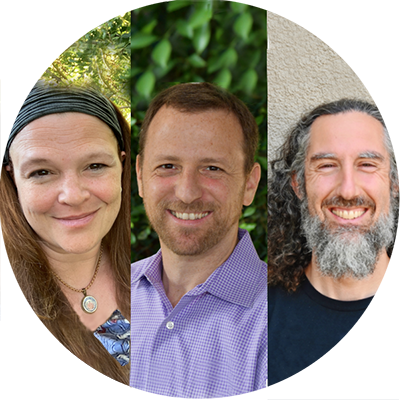

A Multidimensional Approach to Teaching Rabbinics
Pressman Academy is an early childhood through 8th grade school in Los Angeles serving a religiously diverse group of students. The school’s Judaics program, which includes Hebrew language, Jewish history, Tanakh, and daily prayer, affords a maximum of two weekly periods to teaching Rabbinics (in grades 5-8), presenting a significant challenge of what to include and how to approach it.


The Sanhedrin is in Session: Experiencing Rabbinic Literature
On Tuesday morning Rabban Gamliel called the gathered people to order. A letter had arrived from a northern district court in the Galilee which required the attention of the Sanhedrin. Rabban Gamliel took his seat at the head of the semi-circle of esteemed Rabbinic colleagues. R. Yehoshua sat on one side of him and R. Eliezer sat on the other.
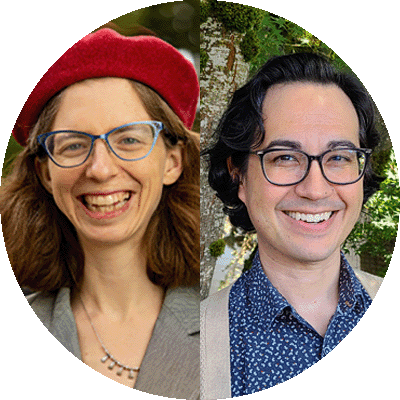

Replacing Relevance with Relationship
A relationship to Talmud study is highly valuable to those who possess it. Few other activities manage to combine elements of intellectual inquiry, spiritual questing, and moral development in the almost alchemical way that the study of Talmud does. And yet, there are a number of hurdles students must overcome in order to develop an independent relationship with the Talmud. First and foremost, studying Talmud in the original Hebrew and Aramaic can feel scary to the uninitiated. Second, the logic of the Talmud is foreign to students at first. Finally, students may wonder what a text from 1500 years ago might have to say to them.


Teaching Talmud in Secondary Schools: Masorah and Modernity
Teaching of Talmud in traditional secondary schools has been a conundrum from the day it was decided to teach Talmud as part of the standard Jewish studies curriculum. Programs for yeshiva high school graduates in Israel and around the world are consistently populated by an overwhelming percentage of students who, even after six years of multiple weekly hours of Talmud instruction in secondary schools, are helpless in the independent study of Talmud. These students are successful independent learners of advanced mathematics, natural sciences, complex technology, and even humanities, but in Talmud, they require an embarrassing degree of spoon-feeding.
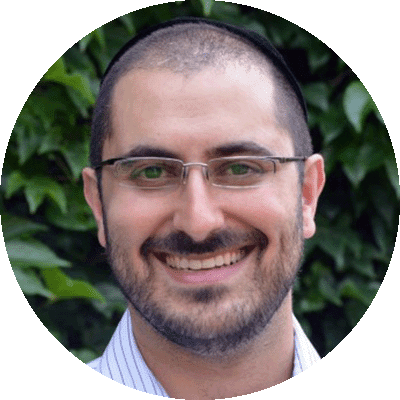

Pre-Mishnah: The Missing Link
I teach 5th grade Judaics at Fuchs Mizrachi School, a Modern Orthodox Zionist school (Cleveland). Upon entering the world of Torah SheBe’al Peh, a student is first greeted by the Mishnah—a complex and sophisticatedly interwoven compendium of Jewish law and wisdom. Students struggle to understand its relevance, how and why it was created, and its importance to the scope of their Torah learning. They ask, “Why are we learning Oral Torah?” and “Why should I care?” but underlying those questions is the more fundamental, “What is the Oral Torah?” While some choose to address this piecemeal over the span of many years, I believe that it is important to address it up front, in an organized manner.
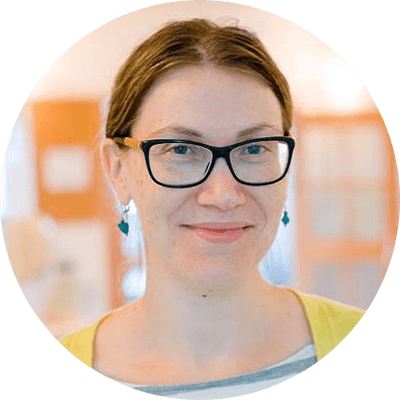

Making the Case for Agada
The rabbis of the Talmud were intentional and thoughtful educators; an example of their consummate pedagogic skill is the way they interspersed narratives into their halakhic writings and teachings. Their use of agadot is an effective teaching tool because, simply put, people love stories. We evolved to tell stories, to become compelled by stories, to connect to the characters, drama, and tension in stories. Stories draw in our students and they have the power to make them care.


Tokhehah Leshem Shamayim
One day, in a 7th grade lesson during our unit on tokhehah (the mitzvah of rebuke), a student shouted out from across the classroom: “This is tokhehah leshem shamayim!” In this moment, with one eloquent and original phrase, this 7thgrader had connected the learning in our current unit of tokhehah with the concept of leshem shamayim (for the sake of heaven) from our previous unit of mahloket (disagreement). This delighted us because it showed that the concepts of mahloket we had been teaching were not just retained for the duration of our unit, or for a test, but were concepts students internalized, held on to, and could apply to new settings and used in unique ways.
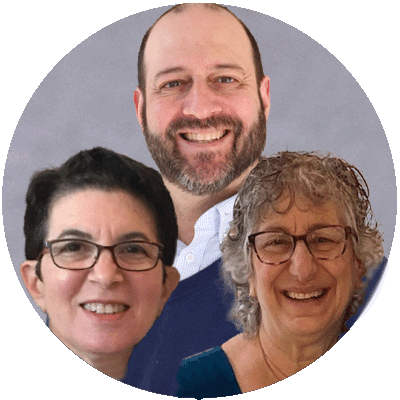

Extending the Reach of Rabbinics
Morah M.’s 5th-grade class is curating a museum exhibit showcasing artifacts that represent family legacy and tradition. The items are described on a placard that explains: These candlesticks were my Bubby’s and now my mother and I use them for Shabbat. When I chose them, I thought of the story about R. Yehuda HaNasi that we learned (Ketubot 103a). Before he died, he told his family that they should continue to set the table the same way, keeping the lamp in its usual place. We’re sort of doing the same thing when we use Bubby’s candlesticks.


Talmud Education for Diverse Learners: Taking the “Long but Short” Road
Teaching Talmud to weaker students can present many challenges not typically found in traditional Gemara classes. Navigating a text in a foreign language, especially one with the unique structure and rules of the Talmud, can be daunting for those grappling with language-based difficulties. Educators must realistically decide which teaching method—skill-based or discussion-based—will best set diverse learners up for success, and how demanding a Talmud course should be for students not likely to pursue this type of Torah learning in the future.
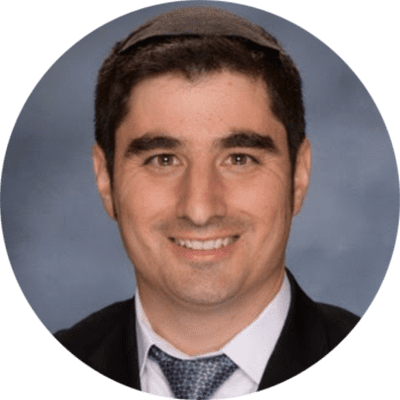

Teaching Talmud Guided by Essential Questions
Standing at the edge of the sea can be an awe-filled experience—the incomprehensibly vast expanse of water with no end in sight is both inspiring and intimidating. We would not consider entering it, whether to swim, sail, surf, cruise, or dive without proper preparation. Similarly, the Sea of Talmud is rich with information, personalities, debates, and much more. It, too, can inspire and intimidate with its vastness and complexity, and we should not expect our students to be able to jump in and navigate it without context and a roadmap. To prepare our students as they embark on their journey into the Oral Torah, we need to define our goals and our strategies for achieving them.
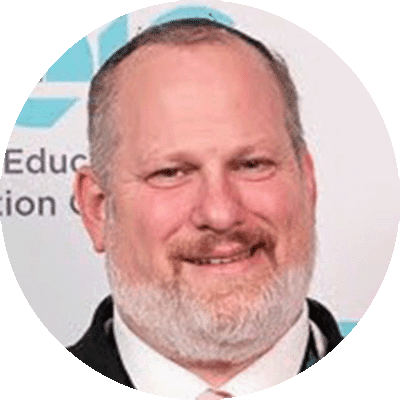

An Alternative Approach for Teaching Talmud
In my first year of teaching, I taught a student whom we will call Yossi. From the time he started 1st grade reading groups, Yossi was placed in the lowest track. This pattern persisted through my 11th grade Gemara class. A few weeks into the first semester of 11th grade, Yossi approached me after class to ask me a burning question which he was embarrassed to ask in front of his peers. He asked, “Who is Rabbi Baraita?” I said, “What do you mean?” He responded, “My past teachers kept explaining ‘the Baraita says…’ Who is Rabbi Baraita and why is he referred to as the Baraita?”


“Wait, What?!” Teaching Jewish Law in a Reform Jewish School
As a teacher at Rodeph Sholom School (RSS), I have for some time considered what it means to teach Torah SheBe’al Peh in a Reform Jewish independent school. What I offer here is a taste of how my colleagues and I have strived to shape our 7th grade Rabbinics unit so that it is aligned with our school’s mission and meets the needs of our specific community of learners. And while every school is unique, I am hopeful that the insights I’ve gained from teaching one unit on the development of Jewish law are instructive for any Jewish day school grappling with teaching Torah SheBe’al Peh.


A Learner-Centered Approach to Teaching Gemara
Traditional methods of teaching Gemara, such as hevruta learning followed by an interactive shiur, have stood the test of time. When teaching beginner students, however, this approach is less common, given their lack of prior knowledge or skills. As a result, many teachers prefer a frontal approach, perhaps projecting the daf on the SMART board and presenting the text phrase-by-phrase while students take notes between the lines of the traditional Vilna text. If hevruta time is used, it is often for the students to review material rather than for them to try to decipher the text. In this article, we are going to propose a method for using a modified version of the traditional approach which can be used for learners starting out on their Gemara learning careers.
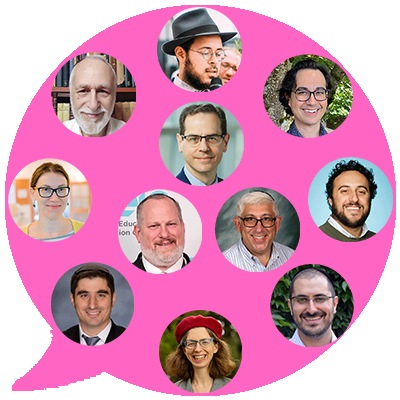

Why Learn Talmud?
Some of the articles in this issue describe the joy of studying Talmud, others break down the complex processes to make it more accessible to students or to enable the students to engage with it meaningfully. And just to make sure that we covered the bases of both the how and the why of Talmud study, we asked our authors to weigh in separately on the question: “Why do you think that day school students should be learning Gemara/Rabbinics?” We invite you to join that discussion.
Fall 2023 Journal Credits
JEWISHEDUCATIONALEADERSHIP
Jewish Educational Leadership is a publication of The Lookstein Center for Jewish Education of Bar Ilan University.
Chana German, Executive Director
JOURNAL STAFF
Hyim Brandes | Editor
Zvi Grumet | Editor-in-Chief
Chevi Rubin | Editor
Shani Sicherman | Copyeditor
Please send correspondence regarding journal content to zvi@lookstein.org.
The Lookstein Center publications present a variety of viewpoints. The views expressed or implied in this publication are not necessarily those of the Center.
EDITORIAL OFFICES AND ADVERTISING
The Lookstein Center for Jewish Education
Bar-Ilan University
Ramat Gan 5290002 Israel
Tel: +972-3-531-8199
US: +1-646-568-9737
www.lookstein.org
© 2023 by The Lookstein Center for Jewish Education.
All rights reserved.


